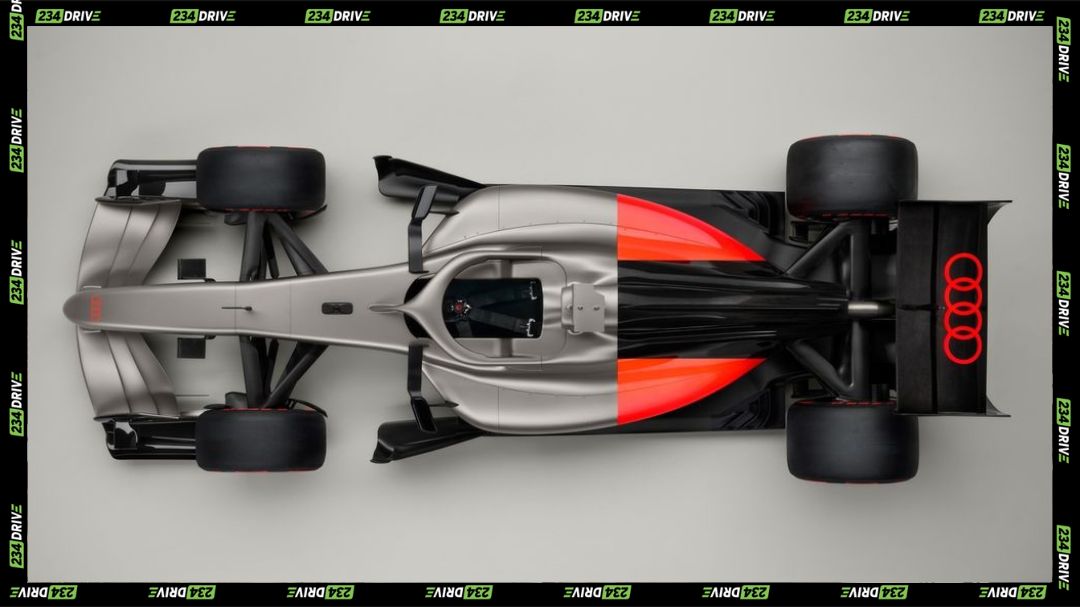Audi’s R26 Concept shows a company stepping into Formula 1 with the mindset of a long-term player rather than a publicity stunt. The reveal in Munich wasn’t just a design showcase; it marked Audi committing resources, leadership, and engineering capacity on a scale only a few teams can match.
Audi confirmed the car as the visual blueprint for its 2026 F1 challenger, pairing a titanium-silver and carbon-black base with sharp geometric cuts and a new Lava Red that hints at both heritage and electrification. This isn’t the usual livery refresh. It’s a brand reset, built around minimalism, cleaner lines, and the reality that modern F1 cars double as high-speed marketing assets.
The project’s structure shows why Audi treats this as a strategic move rather than a gamble. Sauber’s acquisition gives them an operational backbone in Switzerland, Neuburg handles power unit development with tolerances under a micron, and the Bicester tech office gives direct access to UK talent pools. adidas, bp, and Revolut slot in as early partners while Binotto and Jonathan Wheatley run day-to-day leadership. The timeline is tight: first, closed Barcelona tests in January 2026, Bahrain in February, and a debut in Melbourne in March.

What Audi is building is a 1.6-litre V6 hybrid system that splits output almost evenly between combustion and electric power. That aligns with 2026’s regulations and makes the project directly relevant to the road-car business. The first units ship in December 2025, with development relying on simulations until real track time opens.
The broader shift this signals is clear: Audi wants to re-enter global motorsport with a technological message. A clean-sheet design, in-house power unit, and heavy brand integration point to a long game. Most manufacturers entering F1 underestimate the steep learning curve; Audi is managing expectations by aiming for real competitiveness closer to 2030.
Globally, this entry stands out because few manufacturers have launched a fully integrated programme in the cost-cap era. Mercedes built dominance by aligning power unit leadership with chassis efficiency. Red Bull’s long-term success grew from aggressive talent consolidation. Audi is trying to compress both models into one: heritage-backed engineering plus a modern brand system.
Other new entrants or returning brands have struggled without a unified system. Honda needed multiple resets before its power units became competitive. Ford’s 2026 collaboration with Red Bull is external rather than fully owned. Compared to them, Audi’s vertically integrated approach may offer a faster path to stability.
The R26 Concept also serves as proof of intent. Audi stressed that the concept is narrower than today’s cars, featuring active wings and cleaner surfaces. It’s built around 2026’s shift toward more compact, efficient, and road-relevant designs. The idea is to show what the brand thinks Formula 1 should look like: technical, clean, and emotionally sharp.
Audi’s track record gives the project credibility: Le Mans dominance, global motorsport wins, and a design language that consistently feeds back into production cars. This F1 programme now becomes the flagship for the next phase of the brand. If Audi hits its targets, the R26 Concept won’t just preview a car. It will mark the point where a legacy manufacturer redefines its motorsport identity.
The only question is how quickly Audi can convert this structured ambition into podium-level execution. With testing restrictions, limited development windows, and the complexity of hybrid integration, the 2026–2028 seasons will determine whether the brand’s clean-sheet approach sets a new benchmark or faces the typical manufacturer struggle curve.








